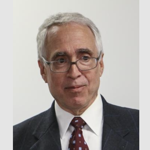The Jurassic Park of Reform
The question is why the Republican senator would ask Congress to take the journey. It cannot be because his home-state federal employees are clamoring for reform. Subtract Wright-Patterson Air Force base and the Lewis Space Flight Center from his state totals and Voinovich barely represents enough federal employees to fill a minor-league baseball stadium. Nor can it be because Ohio voters are pressing for action on the human capital crisis in faraway Washington. Most of Voinovich's constituents probably cheer whenever he warns that half the federal workforce is about to retire.
It most certainly is not because anyone else in the Senate or House wants to sign up for the dinosaur tour. It has been almost 25 years since Congress last passed a major civil service reform bill, and most members would be just as happy to wait another 25 before acting again. As former Rep. Patricia Shroeder once complained to her Civil Service Committee colleagues, "the civil service is a very difficult concept for most people to know about, and once you get beyond this committee, if you did a test on the House floor about the difference between RIFs and freezes and buyouts and everything, their eyes glaze over, and they stare at you like a deer in the headlights."
Voinovich seems to be genuinely motivated by the desire to do good. He talks incessantly about the looming retirement wave and never fails to promise not to give up. He has commissioned dozens of studies of the problem and held more than his fair share of hearings, including a couple in which yours truly droned on about the need for action. He now promises to draft the first comprehensive civil service reform bill since 1978. Having spent his career running public agencies as county auditor and commissioner, big-city mayor (Cleveland) and governor, he believes that people matter to performance. Voinovich's greatest challenge is to pick the right path to reform. Take a radical departure, and he is likely to be stomped by the stegosaurus of the status quo; tinker with the status quo, and he will be gobbled up by the raptors of hiring and pay freezes that always seem to attack even the best-intentioned reforms.
The senator faces three paths as he moves ahead with legislation. The first takes the well-worn course of incremental reform. It is the same path that the Clinton administration took two years ago with no success, but it could give Voinovich and other reform advocates a handful of easy victories and the confidence to tackle more radical reform. The government desperately needs to improve its entry-level hiring. In an era of high-velocity turnover and hiring through Web-based search engines, talented recruits shouldn't need advanced training to read a federal job posting or have to apply for jobs in person.
Voinovich faces a much more difficult choice beyond the entry level. He must decide whether the answer to the government's human capital crisis lies in keeping employees or stirring up competition in the workforce.
The federal government historically has viewed recruitment and retention as two sides of the same challenge. Because the federal government rarely hires from the outside above the entry level, the quality of the workforce depends almost entirely on initial hiring decisions. The essence of the old, single-entry point, 30-year federal career involves a clear chain of promotion that reserves most mid-level slots for current employees.
But that career has been obliterated by the new labor shortage. The new public service is composed of a much more flexible, high-turnover workforce that sees little value in a 30-year commitment. Talented recruits might spend a few years in the federal government, move to the private sector to make some money, spend some time in the nonprofit sector helping people one-on-one, and then come back to the federal government for another tour. The only problem is that most federal agencies don't like outsiders.
The question is whether Voinovich should try to revitalize the 30-year career or take the path toward a more porous system that allows greater movement in and out of the government. Although the two paths are not always mutually exclusive, Voinovich clearly understands that the retirement crisis cannot be solved solely at the entry level or by begging retiring workers to stay longer. That Tyrannosaurus Rex staring down at Voinovich and the rest of government is the 30-year federal career fighting to survive as the asteroid of a prolonged labor shortage hurtles toward government. Voinovich would do well to run as fast as possible in the other direction, and lead his colleagues out of the misty past and into a more competitive future.
Paul C. Light is vice president and director of governmental studies at the Brookings Institution and senior adviser to the Presidential Appointee Initiative.







